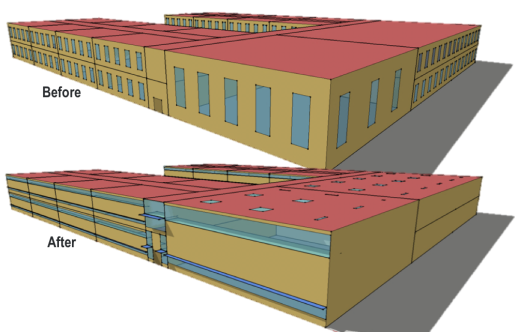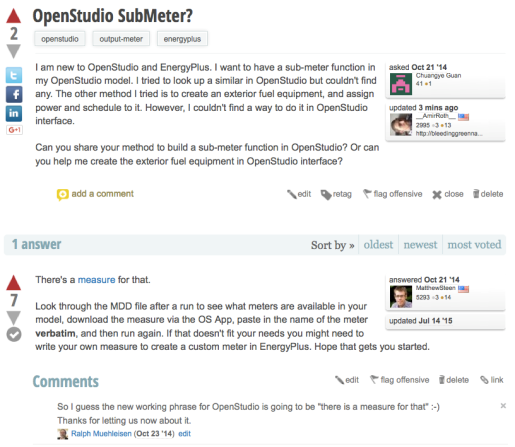Along with EnergyPlus, OpenStudio is one of the core projects and products of DOE’s Building Energy Modeling program.
OpenStudio was conceived as a software development kit (SDK) for EnergyPlus that reduces the effort required to develop and maintain BEM applications. The SDK provides programmatic access to the simulation model as well as functions that automate common tasks associated with model creation and modification, simulation execution, and access to simulation results. Rather than writing and reading EnergyPlus’ detailed input and output files, OpenStudio allows developers to work with models and results directly from the application using functions like model.weatherFile and model.sqlFile.totalSiteEnergy. Organizations like NORESCO, Xcel Energy, and DOE itself have leveraged OpenStudio to develop EnergyPlus-based applications like CBECC-Com, EDAPT, and Energy Asset Score.
Over the past several years, a complementary use of the OpenStudio SDK has emerged. The OpenStudio SDK can be invoked not only from traditional compiled languages like C++, but also from interpreted scripting languages like Ruby and Javascript. And it can invoke interpreters to execute scripts written in these languages. This setup gives OpenStudio a flexible scripting facility that is analogous to the (Visual Basic) Macros that many have used to add impressive functionality to Microsoft Excel spreadsheets. This scripting facility is called Measures because the most common Measures are transformations that correspond to energy-conservation measures. But because they can also access simulation results, Measures can be—and have been—used to create custom reports and visualizations, to perform quality assurance checks, and to automate analysis workflows between EnergyPlus and other tools like Radiance for detailed lighting metric calculations, GLHEPRO for ground heat-exchanger design, and even for importing DOE-2 models!
Along with David Goldwasser and Andrew Parker at NREL, I recently published a paper describing the OpenStudio Measure ecosystem and the growing number of uses organizations are finding for Measures. And since the paper was published, two significant new uses of Measures have emerged—Measures for the creation of prototype building models and Measures for automatic generation of code baseline (e.g., ASHRAE 90.1 “Appendix G”) models! These new Measures will be officially released in the summer of 2016.
An important aspect of Measures is that they reside outside the OpenStudio SDK, and are easier to develop, share, and distribute than core SDK code. Whereas the SDK is developed by DOE’s OpenStudio team with some contributions from external developers, Measures are increasingly being developed by OpenStudio users. There are more than 210 Measures on the Building Component Library (BCL), and more are being added every month.
Consultancies like Ambient Energy of Denver, Colorado, are recognizing and reaping the benefits of working with Measures. “We have used Measures to automate some of our processes. Now we spend less time building models and more time analyzing building performance,” says Ambient’s Matt Steen. Eric Ringold, also from Ambient, adds, “OpenStudio is quickly becoming our analysis tool of choice primarily due to flexibility provided by of Measures. Measures have expanded what's possible with regards to modeling workflow, analysis and reporting, and represent the most exciting recent development in building energy modeling.”
Measure development is becoming such a valuable capability that PSD Consulting—one of OpenStudio’s certified training partners—has started offering Measure development courses both in person and via live online sessions. “These courses are especially popular with experienced modelers,” says PSD’s Nate Asbeil. “They leave the course ready and eager to improve their modeling processes and productivity.”



